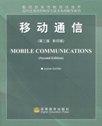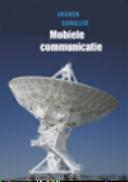Mobile Communications
The Course
The course mobile communications covers many aspects of mobile and wireless communication systems. The following chapters will be covered (don't be afraid of the acronyms - they will be introduced during the course):
- Introduction: applications, history, market vision, overview
- Wireless Transmission: frequencies & regulations, signals, antennas, signal propagation, multiplexing, modulation, spread spectrum, cellular system
- Medium Access Control: motivation, SDMA, FDMA, TDMA (fixed, Aloha, CSMA, DAMA, PRMA, MACA, collision avoidance, polling), CDMA
- Telecommunication Systems: GSM (HSCSD, GPRS), TETRA, UMTS/IMT-2000
- Wireless LAN: IR vs. radio, infrastructure/ad-hoc, IEEE 802.11 (a, b, g, h), mobile QoS, Bluetooth, IEEE 802.15
- Mobile Network Layer: Mobile IP, DHCP, ad-hoc networks, routing optimization
- Mobile Transport Layer: traditional TCP, Indirect TCP, snoop TCP, Mobile TCP, proxies, wireless TCP
- Support for Mobility: file systems, WWW, Wireless Application Protocol
- Outlook: 4th generation, IP-based networks, always best connected
The Book
2nd Edition
 |
What is new in the second edition?
Over three years have passed since the publication of the first edition. During this time, many new ideas showed up, several ideas were dropped, and many systems have been improved. The main changes, besides updates of all references and links, are the following:
A solution manual is available upon request for teachers. 512 pages, ISBN 0-321-12381-6 |
2nd Edition from HEP (Higher Education Press, People's Republic of China)
 |
This special edition is available in the People's Republic of China only.
This edition has the same content as the German or English version. A solution manual is available upon request for teachers. 512 pages, ISBN 7-04-010897-6 |
Mobiele communicatie, tweede editie
 |
Deze nieuwe editie van Jochen Schillers succesvolle inleiding in het onderwerp mobiele communicatie biedt studenten en andere geïnteresseerden een grondige kennismaking met het vakgebied. Het brede scala aan voorbeelden en de doeltreffende didactische aanpak maken het boek zowel geschikt als lesmateriaal voor cursussen voor gevorderde studenten als voor zelfstudie. ISBN 90-430-0964-4 |
2. Auflage

(klicken zum Vergrößern) |
Was ist neu in der 2. Auflage?
Mehr als drei Jahre sind nun seit dem Erscheinen der ersten Auflage vergangen. Während dieser Zeit entstanden zahlreiche neue Ideen, viele anfänglich gerühmte Ideen wurden schnell wieder fallen gelassen und die meisten Systeme wurden Stück für Stück verbessert. Die wesentlichen Neuerungen im Buch, die über die Aktualisierungen der Referenzen hinausgehen, sind folgende:
Für Dozenten ist auf Anfrage ein Lösungsheft erhältlich. 565 Seiten, ISBN 3-8273-7060-4, € 39,95 |
The solutions accompanying the book are only available to instructors using the book as course material. They are not to be made available to any other parties without permission in writing from Pearson Education.